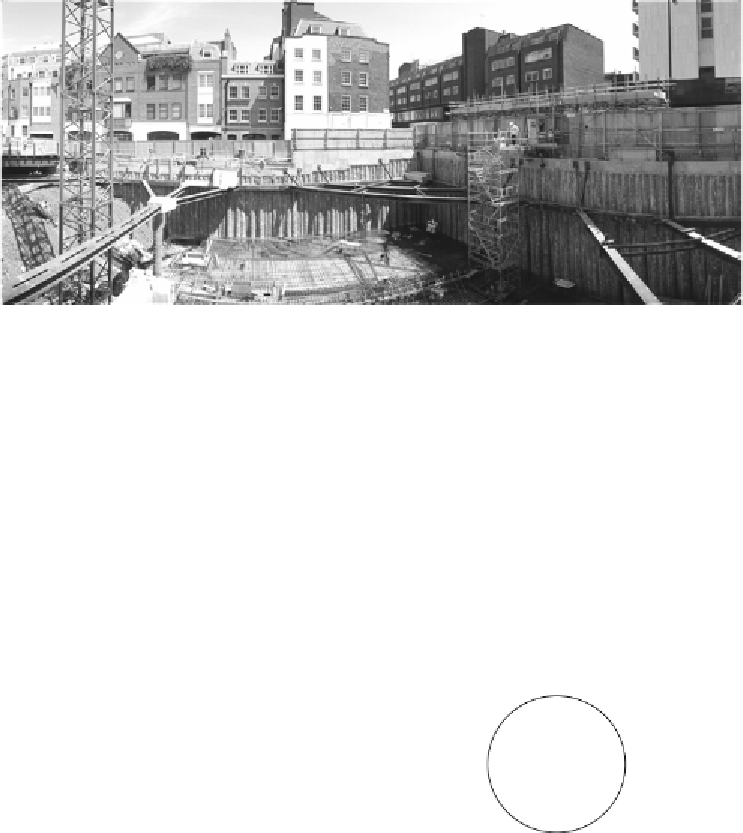Geoscience Reference
In-Depth Information
results. Columns are applied in grids, in walls (Fig 13.11), and occasionally
overlapping on all sides to achieve mass stabilization. Binder powder can be
transported to the mixing tool by air (dry mixing), or it can be slurried (wet
mixing). Column diameters are typically 50 cm, and lengths can be up to 60 m
(Japan, offshore). The Scandinavian method applied unslaked lime (CaOH)
sometimes with Portland cement in a 1:1 ratio, and was limited to soft, inorganic
clay. Typical binder dosage is in the order of 60 to 100 kg per m
3
of treated soil.
Figure 13.11 Application of mixed column walls for a large building pit
Recently it has proven possible to apply the method in organic clays and even in
peat. Lime does not harden well in these soils, but blast furnace cement has been
found to give satisfactory results, albeit that high dosages in the order of 250 kg/m
3
are needed. The latter development has brought the method into focus in the
Netherlands, covered as it is liberally with soft organic soils. It was trial tested
since 1998 at a number of locations, and has been since used in a number of
projects, all of which happen to be train tunnel approaches: Botlek train tunnel,
Randstadrail tunnel, Groene Hart tunnel. Its use is being contemplated for stability
enhancement of river dikes as a space-efficient alternative to berm widening (the
INSIDE concept), see Chapter 17.
q
unit cell
a
deep mixed column
1-a
Figure 13.12 Schematization of a deep mixed column















Search WWH ::

Custom Search